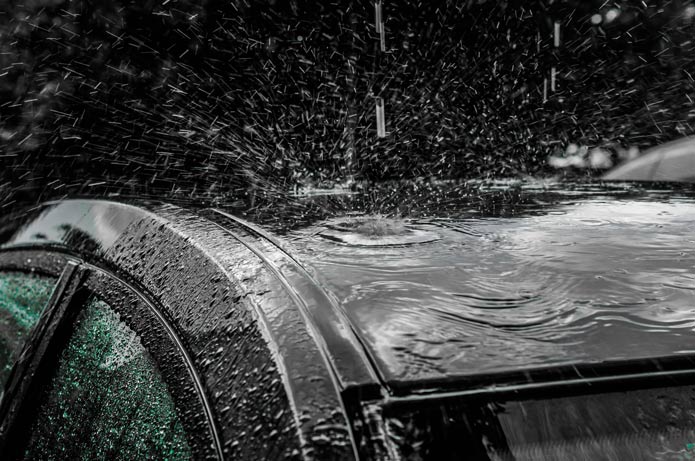Magazine
Safe driving in the rain
- Rain on the road
- Visibility
- Driving through standing water
With the changing of the seasons comes a change in the road conditions, so motorists need to be aware of the implications and adjust their driving style to suit them. This is particularly important when it’s raining and the road surface is wet.
Rain on the road
After long periods of dry weather or when the leaves begin to fall from the trees and seeds and fruit drop from overhanging branches, the onset of rain will bring about a considerable difference in the amount of grip your tyres will be able to have on the road surface and hugely increase the risk of losing control of the vehicle.
Wet roads are bad enough, but the addition of the dust, dirt and debris that builds up almost invisibly during dry conditions and the leaf litter and natural windfall from trees and bushes present in the autumn, combines to make an incredibly slippery solution that creates a lubricated layer between the tyres and the road surface, which needs to be treated with caution.
In addition, during or after periods of heavy rain, excessive surface water and large puddles can potentially lead to your vehicle aquaplaning, which is when a layer of water is trapped between the tyres and the road surface, and means that, in effect, your car is no longer in contact with the road and you have no control, so cannot brake or steer effectively. The likelihood of this phenomenon is increased with speed, so it is a particular hazard on motorways, dual carriageways and stretches of fast, open road.
Visibility
It’s an obvious statement, but rain, particularly when it’s heavy or in the dark, makes it very difficult to see clearly when you’re driving. So again, your speed must be reduced accordingly, because, in addition to the reduced visibility, the road surface has less grip, so stopping distances are significantly increased.
Although using dipped headlights will not only help you to see the road ahead, they will also greatly increase the ability of other drivers to see you. That said, they also inadvertently contribute to the challenges of driving in these conditions, as the light shining off the road surface can sometimes be distracting. However, a new set of windscreen wipers is a sensible safety measure, because, as well as clearing the rain from your windscreen more effectively, that process also helps to reduce some of the glare.
Driving through standing water
Driving through large puddles or water of more than a few inches deep can be risky. Even if the water level is below the bottom of the doors, so the cabin isn’t in danger of flooding, it’s likely that the exhaust pipe, and even more seriously, the engine’s air intake could be below the waterline, which means with the former the engine might stall and with the later, the engine could ingest water and be severely damaged as a result.
If you are forced to traverse water at these sorts of depths, use the car’s lowest gear, so that the engine speed is kept up and the exhaust isn’t swamped, and keep to a steady speed – not too fast that you create a large bow-wave, but not too slow to risk stalling.
Once through, be aware that your brakes will be awash with water and considerably less effective than normal, so, providing it is safe to do so, dry them off by gently applying the brakes a few times until their normal effectiveness is restored.
If, however, you have the misfortune to stall while still in the water, don’t attempt to restart the engine as it’s likely that this will draw water into the engine and cause a lot of damage. Instead, abandon the vehicle and move to higher ground away from the scene, and contact the local authorities to draw their attention to the hazard to other road users, and a vehicle recovery service so that they can rescue the vehicle.

